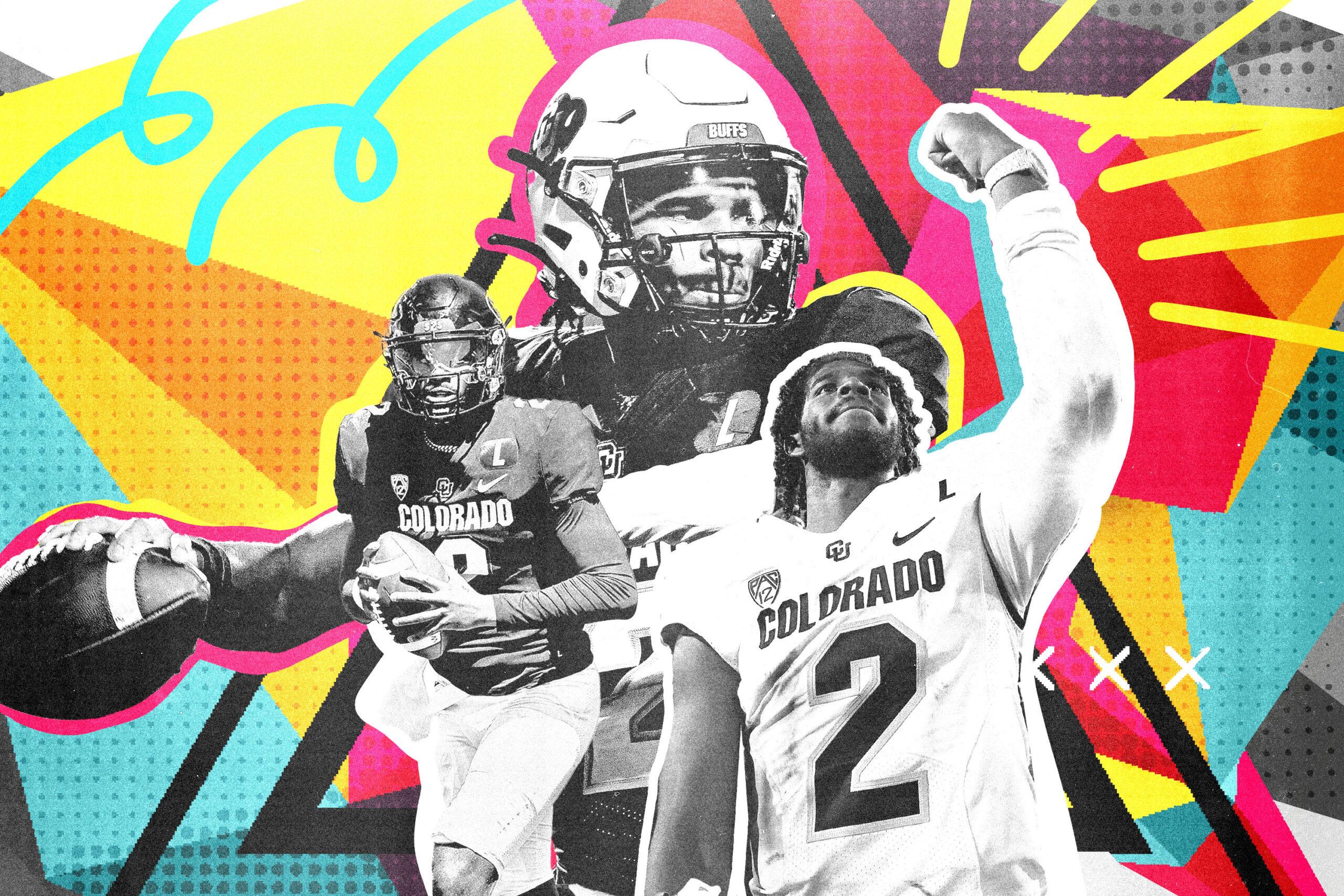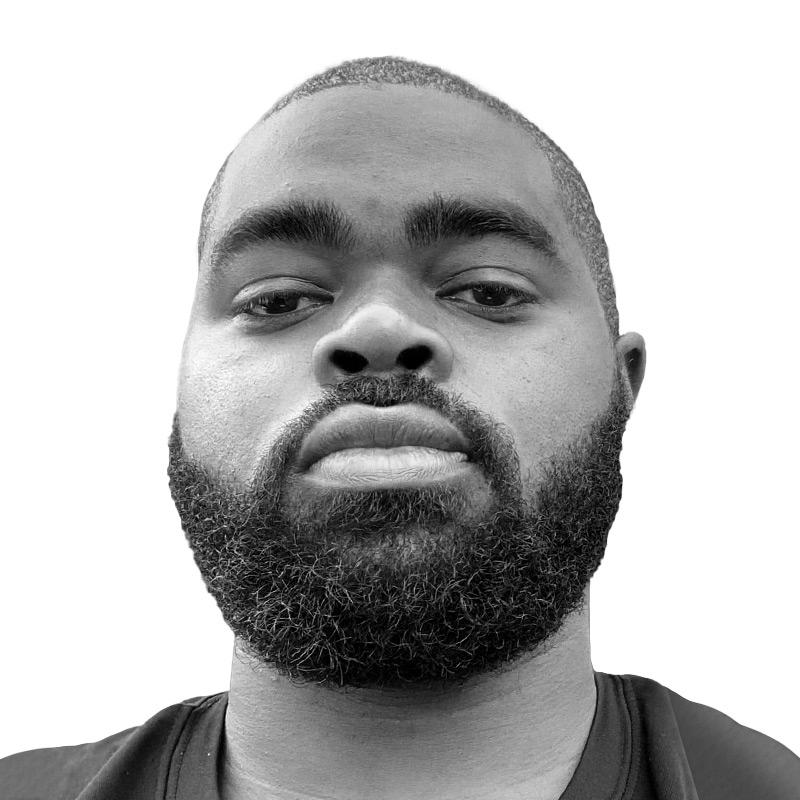
For the first time in the Coach Prime era, the Colorado football team seems to be making its moves in relative silence. The Buffaloes are coming off their bye week at 4-1, and quarterback Shedeur Sanders has thrown for 631 yards and five touchdowns in the past two games. Saturday’s prime-time matchup against 18th-ranked Kansas State might be the biggest game of Sanders’s tenure so far.
This next stretch of games will be huge for the quarterback, as the QB1 spot in the 2025 NFL draft is up for grabs. Sanders has an opportunity to take a firm hold on the top spot. Georgia’s Carson Beck was a mess in the first half of his team’s loss to Alabama a couple of weeks ago, Quinn Ewers missed several games for Texas, and there are still unanswered questions about Alabama QB Jalen Milroe’s accuracy and whether we can trust that what we’ve seen from Miami’s Cam Ward this season will translate to the NFL.
Sanders isn’t the most physically gifted quarterback among this group of prospects, but he’s experienced and efficient—and his family name and notoriety will be a unique asset in what is otherwise a down year for drafting young passers. His name alone could draw the attention of NFL owners who want a high-profile prospect in the building as badly as they want an elite one.
I’ve been watching Sanders closely this season and I’ve seen enough to profile and evaluate his playing style and potential at the next level. Let’s take a look at his strengths and weaknesses to get a clear picture of what Sanders is as a passer now, and what he could be in the next phase of his playing career.
Strengths: Accuracy and Anticipation
Sanders is an over-coached quarterback, for better and for worse, and we’ll look at how an intense level of training for perfection can cut in both directions for a passer. When that prep manifests positively, Sanders is able to stand tall in the pocket and anticipate windows coming open in the middle of the field, which allows him to throw accurately between defenders. Even in Colorado’s 28-10 loss to Nebraska last month, you see him get to the bottom of his drop, climb the pocket, and hit his receiver as he wraps around the linebacker. Sanders’s clean throwing mechanics are arguably the best in this class, and he’s confident in his throwing platform, which is why late pressure doesn’t affect his throw.
Sanders has a good understanding of soft spots in zone coverages, and that has allowed him to regularly take the easy and accessible throws this season. This is an area where he’s shown tremendous improvement from last year, when he was more prone to take unnecessary chances or stare down receivers. The throw below isn’t going to make many highlight reels, but it’s evidence of a quarterback who wants to keep the game simple whenever possible. Again, as soon as he finishes his dropback, he’s ready to deliver the ball accurately, on time, and away from closing safeties:
Because Sanders seems to now better understand how defensive backfields are trying to attack Colorado’s passing game, his aggression on downfield throws is more calculated and effective than what we saw in 2023. In this clip, Baylor’s defense is showing a quarter-quarter-half look, with the slot defender assigned to carry receiver Travis Hunter up the seam. Baylor’s safeties don’t give Sanders an ideal passing look, but there’s just enough space for Sanders to take a chance, and his combination of placement and timing gives this offense an explosive play:
Along with Sanders’s improvements in pre-snap recognition and his sped-up processing, he’s clearly made it a point of emphasis to operate from the pocket as often as he can this season—even when pockets get muddy and pressure is closing in. In the clip below, Baylor threw a twist game at Sanders up front, trying to push the quarterback out of the back side of the pocket. Sanders nearly took the bait, but you can see him plant his feet and reestablish his launching point before delivering the ball to a receiver in the middle of the field. These are the kinds of plays Sanders will be glad are on his tape for NFL scouts, because quarterbacks who bail on structure at the first sign of trouble often have to rely on pure physical ability, and that’s not where he excels. I would also add that making a throw in the middle of the field after resetting his feet is a huge plus in his evaluation, and is a sign that he has disciplined eyes; he’s not concerning himself with the pass rush any longer than necessary.
When you consider his stature in the pocket, his clean mechanics, and his anticipatory throws in the middle of the field, Sanders looks like he should be able to step into the NFL and operate a play-action offense from under center. Sanders should be able to work effectively in the short-to-intermediate area of the field against the simpler pro defensive looks—he’s come a long way in showing some patience in the pocket as windows come open in that part of the field. Sanders will need some training wheels in any offense he operates at the next level, but he can, and will, put the ball where it needs to be more often than not.
Issues: Pocket Management, Raw Arm Talent
If there’s a nit to pick about Sanders’s profile as an on-schedule pocket passer, it’s his lack of high-end arm talent. If passing windows come open late and require Sanders to put some velocity on the ball to get it there on time, it often affects his accuracy.
We saw that last month against Nebraska. The Huskers defense mixed up their coverage shells after the snap, which forced Sanders to hesitate before attempting throws in the middle of the field. When it’s time to drive the ball, Sanders meets the baseline velocity required of a functional pro quarterback, but as you can see in the clip below, he doesn’t have the arm strength to get his offense out of disadvantageous situations.
These issues are accentuated as coverage gets tighter. When Baylor played man coverage on third down on the play clipped below, Sanders didn’t have an opportunity to get the ball out as quickly as he’d like to. This delay forced him to throw the ball to a blanketed receiver. The margins on these throws are tighter than he’s comfortable with, and he doesn’t place the ball well or throw with enough velocity. If this throw was out in front of his receiver, there would’ve been a chance at a completion and yards after the catch, but that’s not where he put it.
If Sanders continues to struggle with accuracy against tight coverage, it is difficult to project how well he’ll perform in the NFL on money downs—those third-and-longs when the quarterback has to deliver. The less a quarterback can do with his arm, the more strain is placed on the scheme, and there are limits to how many answers an offense can offer without opening up the quarterback to other vulnerabilities, like sacks and turnovers.
More concerning than his lack of raw arm talent is Sanders’s overall pocket management—and for all of his improvements he’s made since last season in that regard, he still struggles to be a problem-solver outside of structure when protection breaks down. Sanders is a decent passer when he’s on the move, but there’s a distinction to be made between throwing on the move and throwing off-platform. In the play below, Baylor’s defensive front tries to confuse Colorado’s offensive line with the threat of a blitz, but ultimately brings just a four-man rush, which is enough to get Sanders off his spot. But Sanders doesn’t generate the kind of torque he needs to make a throw across his body once he’s moved off his platform.
I’m most concerned about how he manages the pocket when he’s pressured, because he’s not twitchy or particularly strong when there’s traffic to work around or through. He’s fast enough to get away from guys when he’s made a decisive plan to run, but the walls close in on Sanders faster than you’d like to see for a franchise NFL quarterback, and that may box him into a pocket-only style, which is no longer a preferred way to play in the league. To the point of over-coaching, though, it feels clear to me that he’s not confident in his ability to ad-lib, nor does he have the natural physical ability to do so.
It’s clear he manages the game best when he’s able to be decisive, and the clip below from the Nebraska game is an example of what it can look like when he successfully leaves the pocket. Sanders is dealing with a three-man rush, which leaves him a clear exit route from the pocket. He slides into the space to his right without hesitation and keeps his eyes downfield, which allows him to maintain his throwing mechanics.
Final Call
When you consider Sanders’s strengths and weaknesses, I ultimately see him as a pocket-bound quarterback who plays with confidence when he’s operating within the strict confines of an offense. When things break down, Sanders will keep his eyes downfield, and that will be an asset at the next level if he receives the right amount of coaching and plays in a scheme that provides him with quick answers. Eventually, though, he’s going to have to make challenging throws in order to move the chains, and he’s shown a tendency to be late and inaccurate—or not escape pressure quickly enough to get to the necessary throws in the first place.
I see some similarities between Sanders and Tua Tagovailoa in terms of playing style, and Sanders could have a similar level of success in the NFL in a timing-based offense like what Mike McDaniel has run in Miami. I don’t think we’re likely to see Sanders be a ceiling raiser as a passer, but he’s going to be a functional player in most offenses. At his best, I could see Sanders in a range somewhere between Kirk Cousins and peak Matt Ryan, but that would require Sanders to take major steps forward in his response to pressure and his accuracy against man coverage.
In comparison to his peers in this class, Sanders may well be the top quarterback in the upcoming draft—and possibly capable of sustaining a long NFL career. But in terms of QB1s, though, I’m not sure he quite measures up to the top prospects from years past.

